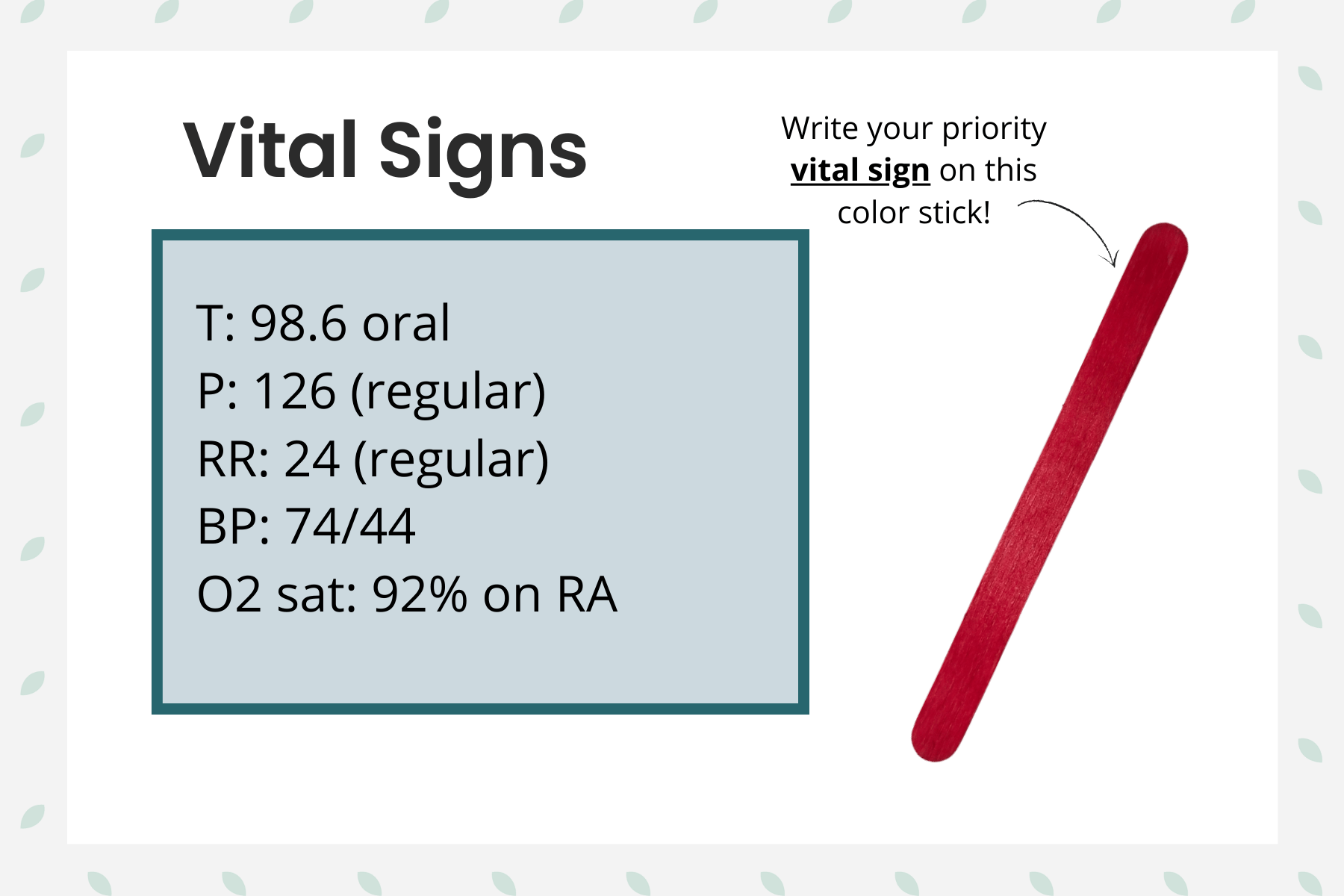Transform an Existing Case Study into a Nursing Prioritization Scenario
An essential nursing skill in the current healthcare environment is to prioritize effectively. Unfortunately, this does not just apply to which patient to see first. It goes far beyond – including which tasks to delegate to healthcare personnel, which assessments require immediate follow-up, and using resources competently. As educators, we should offer our students multiple opportunities to practice within a nursing prioritization scenario before they are faced with these decisions in practice.
The Popsicle Stick Prioritization 🍡 activity is excellent for individuals or small groups and gives students the opportunity to "vote" on their highest priority. And it can be a simple add-on to any case study you already use in class, so it is minimal work to implement.
Getting Started with the Popsicle Prioritization Activity
Supplies Needed
You will need a package of colored popsicle sticks, bags/baskets, and some markers/pens. You could use plain popsicle sticks, but prioritizing multiple categories can get confusing without the colors. Here is an example of the popsicle sticks that I use.
Transform an Existing Case Study
I learn best when I can imagine what is going on. So let's check out this example:
You are covering GI bleeding in your theory course and you have an excellent case study that covers the main topics of blood-loss anemia. First, present the students with only the "background" and "vitals."
Next, magically turn the case study into a nursing prioritization scenario. Ask the students to find the colored popsicle stick that corresponds with "vital signs" (in this case, it is RED). Everyone grabs their RED popsicle stick. Next, instruct the students to write on the stick what they believe to be the priority, most important, must-do-something-about-this vital sign. If you have enough sticks, everyone can write independently, or you can have them discuss in small groups.
You can continue this process for various categories using a popsicle stick of different colors for each. Here are a few ideas:
Assessment Findings
Provider Orders
Delegation Tasks
Other Ideas that can be prioritized
Which patient to see first
Change in condition
What information should support personnel report
What question is most important to ask a provider
Lab Values
When they have settled on an answer for each topic, have the group representative bring up their stick and drop it into the appropriate bag.
Once all the student groups have voted, there are a few ways to debrief the scenario. 👩🏾🏫
The instructor can review the votes, show students the different votes, and ask for a supporting rationale.
You can hand the bags to the student groups to review the votes. They must decide on the correct response and provide the supporting rationale to the large group. They may see votes that are different from their own, which will indeed generate great discussion!
Are you looking to use these images for your own classroom or as instructions? You can access the template below.
More Options Using Popsicle Stick Prioritization
Using the red, yellow, and green popsicle sticks, create a stoplight color theme prioritization. For example, with assessment findings, write down one "red flag" 🚩on the red stick, one "continue to monitor" 🟡 finding on the yellow stick, and one "nice to know" ✅ finding on the green stick. Then, have students vote by putting all of the sticks into the assessment bag and sorting them by color in the debriefing session.
Online Learners
For online learners, you can modify this activity using highlighting text tools. First, give students the case study. Next, using this highlighter tool in Word or your LMS, have them highlight priority information in “RED”. Use a different color for nice-to-know or continue to monitor. Finally, students can post their highlighted priorities on a discussion board and review each other's responses.
This activity is best for . . .
Adding active learning to a current case study. It is incredible how a simple prop can add depth to a discussion! Also, just the tiny addition of physical movement 🏃🏾♀️to bring the popsicle sticks up to the front of the classroom is fantastic! Using it with an existing case study allows students to practice a nursing prioritization scenario without extra work on the instructor's part.
Conclusion
Providing the opportunity to think through a nursing prioritization scenario is an excellent way for students to practice these skills in theory and clinical. We need to include opportunities for students to learn not only which patient to see first but also how to delegate, use resources effectively, prioritize assessment findings, and understand which orders to complete first.
Looking for more active learning ideas?
There are many more helpful, practical articles in the Idea Bank.
Or, if you would like to incorporate active learning into your classroom, check out BreakoutRN products.






